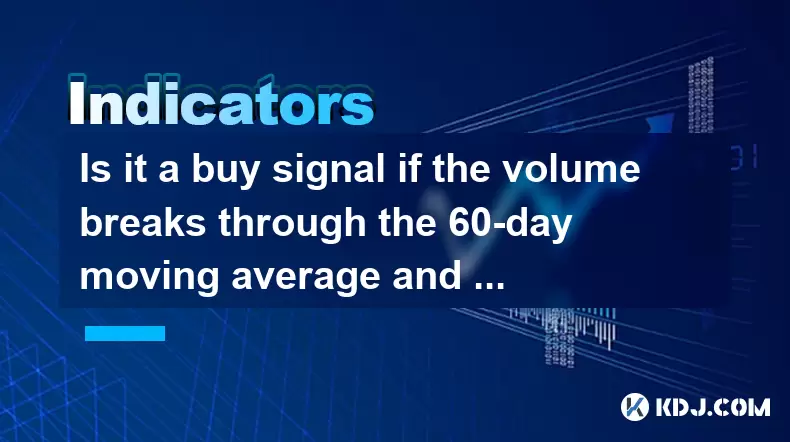-
 Bitcoin
Bitcoin $109,330.5032
0.89% -
 Ethereum
Ethereum $2,661.8271
3.39% -
 Tether USDt
Tether USDt $1.0006
0.04% -
 XRP
XRP $2.3808
4.11% -
 BNB
BNB $663.3047
0.75% -
 Solana
Solana $154.6074
2.96% -
 USDC
USDC $1.0001
0.02% -
 TRON
TRON $0.2876
0.47% -
 Dogecoin
Dogecoin $0.1736
2.37% -
 Cardano
Cardano $0.6105
5.06% -
 Hyperliquid
Hyperliquid $39.2542
4.13% -
 Sui
Sui $2.9702
3.11% -
 Bitcoin Cash
Bitcoin Cash $507.3879
0.84% -
 Chainlink
Chainlink $14.0303
3.57% -
 Stellar
Stellar $0.2912
14.83% -
 UNUS SED LEO
UNUS SED LEO $9.0547
-0.25% -
 Avalanche
Avalanche $18.6501
3.24% -
 Hedera
Hedera $0.1702
6.77% -
 Shiba Inu
Shiba Inu $0.0...01213
2.66% -
 Toncoin
Toncoin $2.8233
2.12% -
 Litecoin
Litecoin $88.6781
2.43% -
 Monero
Monero $321.5220
2.77% -
 Polkadot
Polkadot $3.5388
4.44% -
 Dai
Dai $1.0002
0.02% -
 Ethena USDe
Ethena USDe $1.0010
0.07% -
 Uniswap
Uniswap $8.2247
8.18% -
 Bitget Token
Bitget Token $4.3451
1.00% -
 Aave
Aave $298.6045
4.39% -
 Pepe
Pepe $0.0...01035
3.13% -
 Pi
Pi $0.4643
1.47%
Is it a buy signal if the volume breaks through the 60-day moving average and then falls back without breaking it?
2025/06/29 21:42

Understanding the 60-Day Moving Average in Cryptocurrency Trading
In cryptocurrency trading, moving averages are among the most commonly used technical indicators. The 60-day moving average, specifically, represents the average closing price of a cryptocurrency over the past 60 days. Traders use this indicator to identify long-term trends and potential reversal points. When the price or volume interacts with this average, it can signal shifts in market sentiment.
The 60-day moving average acts as a dynamic support or resistance level, depending on whether the asset's price is above or below it. Volume interactions with this line are also closely monitored, especially when there’s a sudden surge or drop.
Volume Breakout: What It Means in Crypto Markets
Volume is a critical component of technical analysis in crypto markets. A volume breakout occurs when the trading volume spikes significantly above its recent average. This often indicates heightened interest from traders and investors.
In some cases, volume may briefly exceed the 60-day moving average before retreating. This pattern raises questions about whether such behavior signals an upcoming bullish trend or just a temporary fluctuation.
- A volume breakout above the 60-day moving average suggests strong buying pressure.
- If the price doesn’t follow suit, it could mean that the rally lacks conviction.
- The subsequent fall back below the average might indicate profit-taking or lack of sustained demand.
Analyzing the Scenario: Volume Rises Above and Falls Below the 60-Day MA
When volume breaks above the 60-day moving average and then falls back without retesting it, traders must consider multiple factors:
- Market Context: Is the broader market bullish or bearish? If Bitcoin is in a downtrend, even a short-term volume spike may not be significant.
- Price Correlation: Did the price move in tandem with the volume spike? A mismatch could suggest manipulation or false signals.
- Timeframe: Shorter timeframes like 4-hour or daily charts may show different dynamics compared to weekly ones.
This scenario is often seen during accumulation phases where whales or institutional players test liquidity without triggering panic or excitement among retail traders.
Why This Pattern Isn’t Automatically a Buy Signal
A single volume event — even one that briefly exceeds the 60-day moving average — should never be taken as a standalone buy signal. Technical analysis requires confirmation across multiple indicators and timeframes.
- Lack of Follow-Through: Without price action aligning with the volume increase, it’s hard to confirm strength.
- False Breakouts: Many breakouts in volume are traps set by large players to shake out retail traders.
- Volume Alone Isn’t Enough: Volume tells us how much is being traded but not necessarily who is doing the trading.
Traders should look for additional signs such as candlestick patterns, relative strength index (RSI), or on-balance volume (OBV) confirmation before considering entry.
How to Confirm the Signal Using Other Indicators
To avoid premature entries based solely on volume touching or slightly exceeding the 60-day moving average, traders should cross-reference other tools:
- Moving Average Convergence Divergence (MACD): Helps determine momentum and potential trend reversals.
- Relative Strength Index (RSI): Indicates overbought or oversold conditions which may precede a trend change.
- On-Balance Volume (OBV): Compares cumulative volume to price changes to validate strength.
- Support and Resistance Levels: If volume rises near key levels, it adds credibility to potential moves.
Only when these tools align with the volume pattern can a trader begin to consider a possible shift in direction.
Frequently Asked Questions
Q1: Can volume alone be trusted for making trading decisions?
No, volume should always be used in conjunction with price action and other technical indicators. It provides context but not confirmation.
Q2: What does it mean if volume repeatedly touches the 60-day moving average but doesn’t stay above it?
This could indicate testing of liquidity levels by larger players without committing capital, often seen before major moves.
Q3: How do I calculate the 60-day moving average of volume?
You take the sum of the last 60 days’ volume figures and divide them by 60. Most charting platforms automatically compute this for you.
Q4: Should I enter a trade immediately after seeing a volume breakout?
It’s generally safer to wait for confirmation through price movement or other indicators rather than entering on volume alone.
免責聲明:info@kdj.com
所提供的資訊並非交易建議。 kDJ.com對任何基於本文提供的資訊進行的投資不承擔任何責任。加密貨幣波動性較大,建議您充分研究後謹慎投資!
如果您認為本網站使用的內容侵犯了您的版權,請立即聯絡我們(info@kdj.com),我們將及時刪除。
- Nexbridge,Nexplace和比特幣生態系統:建立新的金融領域
- 2025-07-09 23:10:13
- MEXC LaunchPad&Pump Token:獲得40%的折扣?
- 2025-07-09 22:50:12
- 貿易系統革命:XDC和傳真的結束如何重塑金融
- 2025-07-09 23:10:13
- Ripple,Clarity Act和XRP案件:紐約加密法規的紐約分鐘
- 2025-07-09 23:50:12
- 沒有50盧比的硬幣?德里HC聽到為什麼印度更喜歡鈔票
- 2025-07-09 23:15:11
- 沒有50盧比的硬幣?德里HC聽到為什麼鈔票統治至高無上
- 2025-07-09 23:50:12
相關知識

How to trade Dogecoin based on funding rates and open interest
2025-07-07 02:49:34
<h3>Understanding Funding Rates in Dogecoin Trading</h3><p>Funding rates are periodic payments made to either long or short traders ...

What is the 'God Mode' indicator for Dogecoin
2025-07-07 16:42:48
<h3>Understanding the 'God Mode' Indicator</h3><p>The 'God Mode' indicator is a term that has emerged within cryptocurrency trading ...

Using Gann Fans on the Dogecoin price chart
2025-07-07 21:43:10
<h3>Understanding Gann Fans and Their Relevance in Cryptocurrency Trading</h3><p>Gann Fans are a technical analysis tool developed b...

How to spot manipulation on the Dogecoin chart
2025-07-06 12:35:49
<h3>Understanding the Basics of Chart Manipulation</h3><p>Chart manipulation in the cryptocurrency space, particularly with Dogecoin...

Dogecoin market structure break explained
2025-07-07 02:51:32
<h3>Understanding the Dogecoin Market Structure</h3><p>Dogecoin, initially created as a meme-based cryptocurrency, has evolved into ...

How to backtest a Dogecoin moving average strategy
2025-07-08 04:50:05
<h3>What is a Moving Average Strategy in Cryptocurrency Trading?</h3><p>A moving average strategy is one of the most commonly used t...

How to trade Dogecoin based on funding rates and open interest
2025-07-07 02:49:34
<h3>Understanding Funding Rates in Dogecoin Trading</h3><p>Funding rates are periodic payments made to either long or short traders ...

What is the 'God Mode' indicator for Dogecoin
2025-07-07 16:42:48
<h3>Understanding the 'God Mode' Indicator</h3><p>The 'God Mode' indicator is a term that has emerged within cryptocurrency trading ...

Using Gann Fans on the Dogecoin price chart
2025-07-07 21:43:10
<h3>Understanding Gann Fans and Their Relevance in Cryptocurrency Trading</h3><p>Gann Fans are a technical analysis tool developed b...

How to spot manipulation on the Dogecoin chart
2025-07-06 12:35:49
<h3>Understanding the Basics of Chart Manipulation</h3><p>Chart manipulation in the cryptocurrency space, particularly with Dogecoin...

Dogecoin market structure break explained
2025-07-07 02:51:32
<h3>Understanding the Dogecoin Market Structure</h3><p>Dogecoin, initially created as a meme-based cryptocurrency, has evolved into ...

How to backtest a Dogecoin moving average strategy
2025-07-08 04:50:05
<h3>What is a Moving Average Strategy in Cryptocurrency Trading?</h3><p>A moving average strategy is one of the most commonly used t...
看所有文章

























































































